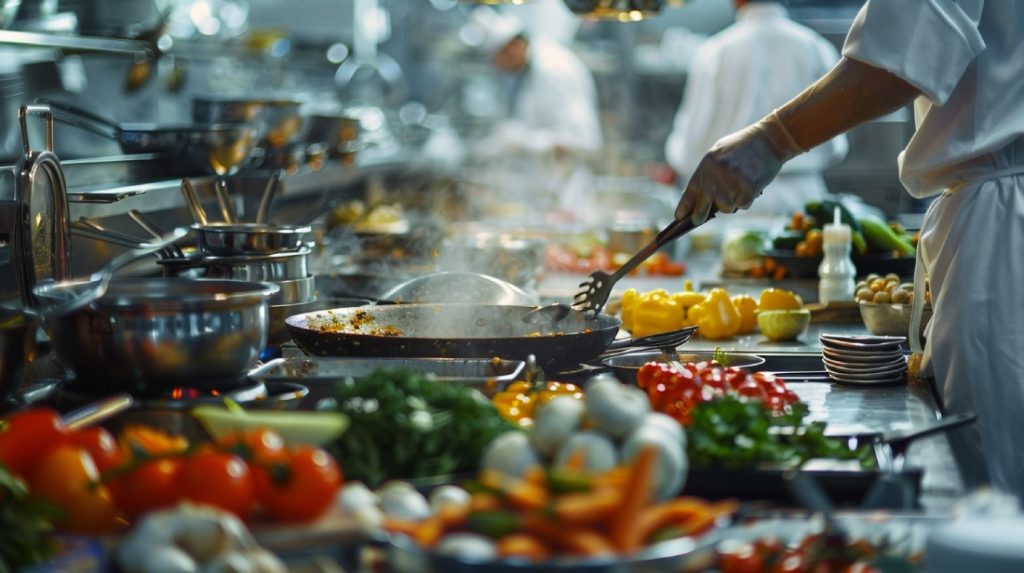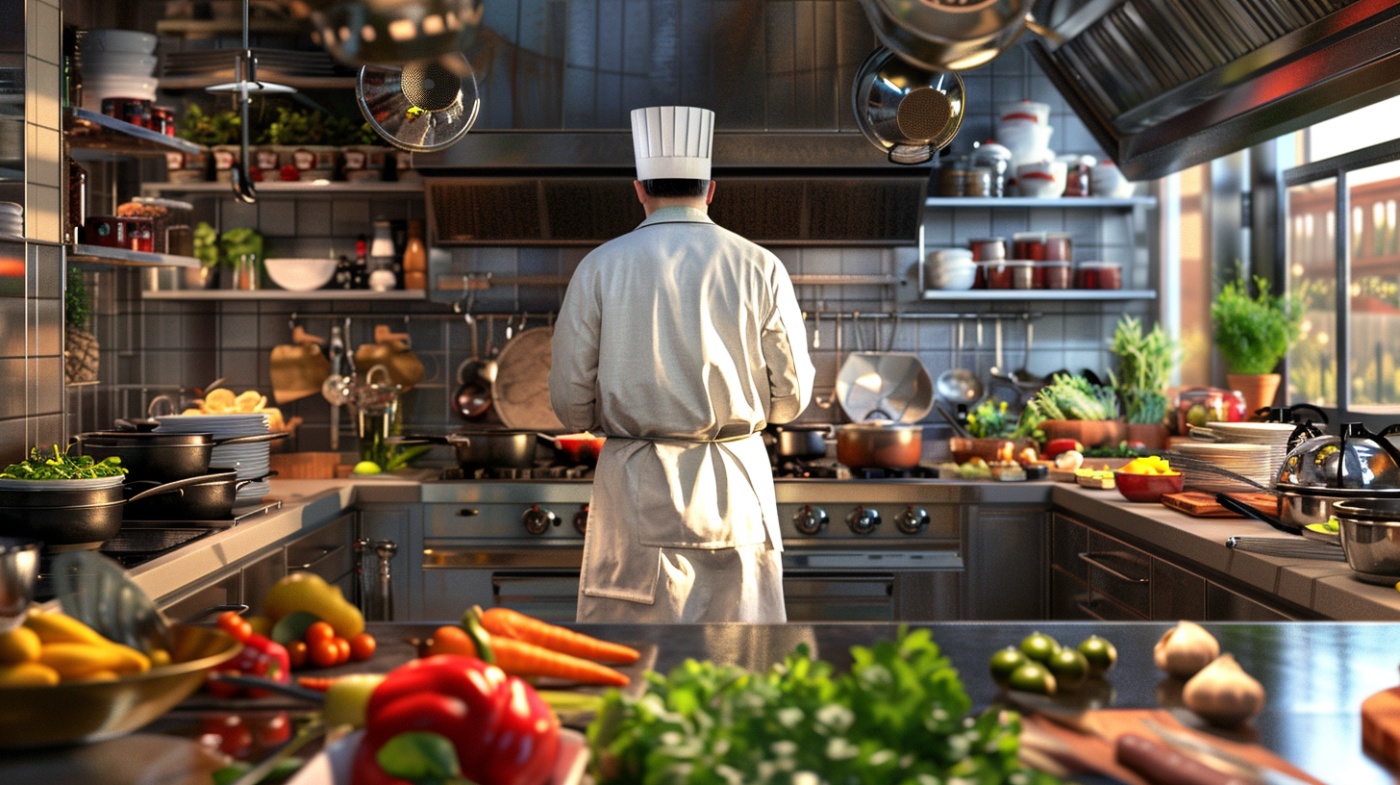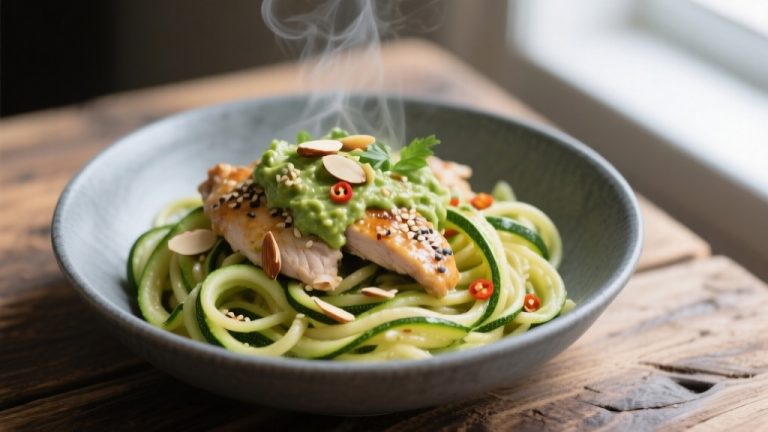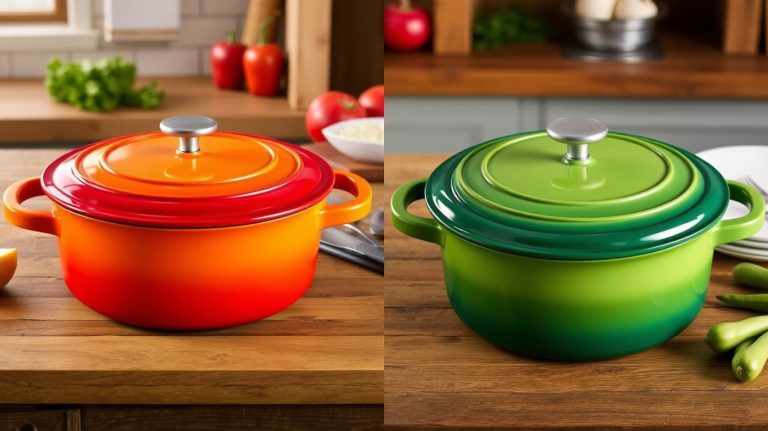Why Do Chefs Wear White Coats: Unveiling the Purpose
Chefs wear white coats to convey professionalism and cleanliness, a tradition established by French chef Marie-Antoine Carême in the 19th century. The white color symbolizes purity and hygiene, essential in food safety. Stains on the fabric serve as a reminder of accountability and culinary expertise.
The design, particularly the double-breasted style, not only enhances aesthetic appeal but also helps reflect heat, ensuring comfort in hot kitchens. This uniform fosters a professional identity among kitchen staff, reinforcing high culinary standards. You might find it interesting to explore how modern trends are shaping chef attire in today’s culinary world.
Key Takeaways
- White coats symbolize cleanliness and professionalism, reflecting high hygiene standards essential in food preparation.
- Stains on the white fabric promote accountability, serving as a visual cue for culinary expertise.
- The double-breasted design helps chefs stay cooler in hot kitchen environments while maintaining aesthetic appeal.
- The uniform fosters a sense of unity and professional identity among kitchen staff, reinforcing commitment to high culinary standards.
- The iconic white coat enhances customer trust, influencing perceptions of quality and professionalism in the culinary experience.
Origins of the Chef’s Uniform
The origins of the chef’s uniform can be traced back to the mid-19th century, where French chef Marie-Antoine Carême played a pivotal role in establishing what we now recognize as the standard attire for culinary professionals.
The history behind the white uniform stems from a desire to convey cleanliness and professionalism, essential in the bustling kitchens of 19th century Paris.
The chef’s coat, designed with a double-breasted style, not only enhances the aesthetic appeal but also serves practical functions, such as stain management and heat protection.
Additionally, the toque, a traditional chef’s hat, indicates rank and expertise through its height and pleats.
This evolution reflects a growing professional identity, fostering respect and unity among kitchen staff.
Historical Significance of White
White coats in the culinary world carry a rich historical significance that extends beyond mere aesthetics. Established by French chef Marie-Antoine Carême in the mid-19th century, the white uniform aimed to elevate the status and professionalism of chefs.
The choice of white symbolizes cleanliness and sterility, essential qualities in 19th-century Parisian kitchens. This emphasis on hygiene helped distinguish skilled chefs from their less competent counterparts, as stains on white fabric are easily visible, promoting accountability.
The tradition of wearing white jackets persists today, reflecting a deep respect for the profession’s historical roots. Influential figures like Georges Auguste Escoffier further popularized the uniform within the brigade system, ensuring its importance in culinary institutions worldwide.
Reasons for Wearing White
When you consider the reasons chefs wear white, tradition and cleanliness stand out as key factors.
The white coat not only reflects a long-standing legacy in the culinary world but also symbolizes the high standards of hygiene essential in food preparation.
This practical choice helps guarantee that stains are visible, prompting timely changes that safeguard food safety and uphold the professional appearance that builds customer trust.
Tradition and Legacy
Throughout culinary history, chefs have donned white coats as a powerful symbol of their profession, a tradition rooted deeply in the mid-19th century. This tradition dates back to the influential French chef Marie-Antoine Carême, who sought to elevate the culinary profession.
He chose white for its associations with cleanliness and professionalism, essential traits in the bustling kitchens of Paris. The visibility of stains on a chef’s jacket promotes a culture of hygiene, urging you to maintain cleanliness and change if necessary.
Over 200 years later, the legacy of the white coat endures, symbolizing both culinary expertise and commitment to the craft. In many ways, when you wear white, you’re not just a chef; you’re part of a longstanding tradition.
Cleanliness and Hygiene
The bright fabric of a chef’s coat serves as an essential tool in upholding cleanliness and hygiene in the kitchen. The white color of these uniforms plays a significant role in promoting food safety by making dirt and stains immediately visible. This visibility encourages a culture of hygiene that’s vital in food preparation.
Here are three reasons why white coats matter:
- Quick Identification: Stains are easily spotted, allowing chefs to address contamination promptly.
- Professional Appearance: The need for immediate changes reinforces a commitment to maintaining a clean look.
- Symbol of Purity: White coats align with food safety standards, embodying purity and sterility.
Practical Benefits of White Uniforms

Maintaining a chef’s pristine appearance in the high-pressure environment of a kitchen isn’t just about aesthetics; it also serves practical purposes.
White uniforms offer several practical benefits, particularly regarding cleanliness and hygiene standards. The color white reflects heat, helping you stay cooler in hot kitchens.
Additionally, white fabrics are easily washable, allowing for effective bleaching and ensuring a consistently clean look. Food stains are less permanent on white, making removal simpler and promoting hygiene.
Visible stains prompt immediate changes, reducing the risk of cross-contamination during food preparation.
Furthermore, the durability of white uniforms withstands frequent laundering, making them ideal for the demanding conditions of a professional kitchen, where both appearance and functionality matter.
Modern Trends in Chef Attire
Modern chef attire is evolving, reflecting a blend of creativity and practicality.
You’ll notice that color variations and personalized branding are becoming prominent, allowing chefs to align their uniforms with their restaurant’s identity.
Additionally, as sustainability gains traction, eco-friendly materials are increasingly influencing uniform choices, catering to both chefs and environmentally conscious diners.
Color Variation Influence
Color variation in chef attire has emerged as a significant trend, reflecting both contemporary culinary practices and evolving consumer expectations. While the tradition of wearing white jackets, or chefs’ whites, persists in high-end establishments, many restaurants are embracing color for various reasons:
- Brand Alignment: Colorful jackets enhance branding and thematic concepts, creating a cohesive dining experience.
- Hierarchy Indication: Different colors, like black for head chefs, help signify roles within the kitchen, streamlining communication.
- Aesthetic Appeal: In open kitchens and teppanyaki settings, vibrant colors boost visual interest, engaging diners more effectively.
This shift demonstrates a blend of tradition and modernity as chefs balance professionalism with innovative, eye-catching attire.
Personalization and Branding
The evolution of chef attire reflects a broader trend toward personalization and branding in the culinary world. Many modern restaurants now choose personalized chef jackets that express their brand identity while allowing you to showcase your individuality.
Customization options, such as embroidered logos and unique designs, help create a cohesive look that aligns with the restaurant’s theme and values. This trend is particularly prevalent in open kitchens, where branded uniforms enhance customer engagement and reinforce the restaurant’s image.
Additionally, by fostering team spirit, personalized attire makes you more relatable and approachable to diners. As chefs increasingly integrate sustainable materials into these unique uniforms, you align your attire choices with broader societal values, further elevating the dining experience.
Sustainability in Uniforms
Amid growing environmental concerns, sustainability in chef uniforms has become a focal point of modern culinary attire.
Chefs are increasingly prioritizing eco-conscious choices that reflect their commitment to the planet.
Here are three trends shaping sustainable chef uniforms:
- Eco-Friendly Materials: Fabrics like organic cotton and recycled textiles minimize environmental impact.
- Moisture-Wicking Technologies: Breathable materials enhance comfort and reduce laundry frequency, supporting sustainable practices.
- Durability and Customization: Brands are producing long-lasting uniforms that withstand wear, while offering personalized options made from sustainable sources.
Cultural Importance of Chef Uniforms
When you step into a kitchen, the sight of chefs clad in their iconic white coats instantly conveys a sense of professionalism and dedication to the culinary arts.
The chef whites, established by Marie-Antoine Carême in the 19th century, symbolize cleanliness and reflect the cultural significance of hygiene in food preparation. In various cultures, such as Japan, white attire signifies purity, showcasing deeply rooted traditional values associated with cooking.
This historical connection to French cuisine underscores the uniform’s role as a visual representation of culinary expertise, fostering pride among chefs.
Additionally, these uniforms enhance identity within kitchen hierarchies, promoting teamwork and respect among staff, which are vital in the collaborative environment of food service.
Chef’s Hat and Its Symbolism
Chef uniforms not only include the iconic white coat but also feature the distinctive chef’s hat, known as the toque, which carries significant symbolism and tradition.
This essential piece of attire reflects the chef’s rank and expertise within the kitchen hierarchy.
- Each pleat on the toque symbolizes a mastered technique or recipe, with experienced chefs often sporting numerous folds.
- The height of the toque denotes authority; taller hats signify higher status, with the executive chef wearing the tallest.
- In French kitchens, the white color represents professionalism and cleanliness, reinforcing the overall image of the chef’s uniform.
The toque’s design guarantees chefs are easily recognizable in bustling kitchen environments, highlighting their importance in culinary tradition.
Impact of Chef Attire on Perception
A well-tailored white coat doesn’t just represent personal style; it considerably influences how customers perceive a chef’s professionalism and the overall dining experience.
The chef’s coat serves as a powerful visual cue that impacts various aspects of dining:
- Cleanliness: The bright white color highlights stains, prompting chefs to maintain high hygiene standards.
- Professionalism: A pristine coat reinforces the chef’s commitment to their craft, enhancing customer trust.
- Hierarchy: The tradition of wearing white distinguishes skilled chefs from less experienced staff, creating a structured kitchen environment.
Frequently Asked Questions
What Do the Colors of Chef Coats Mean?
The colors of chef coats signify various roles and authority levels in the kitchen. Black often represents head chefs, while other shades, like blue or red, indicate specific positions, enhancing organization and clarity within the culinary hierarchy.
What Does a White Coat Mean Chef?
When you don a white coat, you’re not just wearing fabric; you’re embracing a legacy of cleanliness and professionalism. This iconic symbol embodies culinary mastery, elevating your status and ensuring accountability in the kitchen environment.
Why Does Chef Wear a White Chef Coat in the Kitchen?
You’ll find chefs wear white coats in kitchens for practical reasons. The color showcases cleanliness, while the double-breasted design offers protection. This attire also fosters professionalism, discipline, and pride within the culinary environment.
Why Do Chefs and Painters Wear White?
You’ll find that both chefs and painters wear white to symbolize cleanliness, professionalism, and purity. This color choice promotes hygiene, reflects heat, and fosters a strong identity, enhancing their commitment to their respective crafts.
Instilling Trust and Expertise: The White Coat’s Influence in Culinary Spaces
The white coat is more than just a fashion statement; it symbolizes tradition, professionalism, and hygiene in the culinary world. Wearing white not only reflects a chef’s commitment to their craft but also enhances their authority in the kitchen.
Imagine a bustling restaurant: doesn’t the sight of chefs in crisp white coats instill confidence in their skills? As culinary practices evolve, the significance of these uniforms continues to shape perceptions and traditions within the industry.







